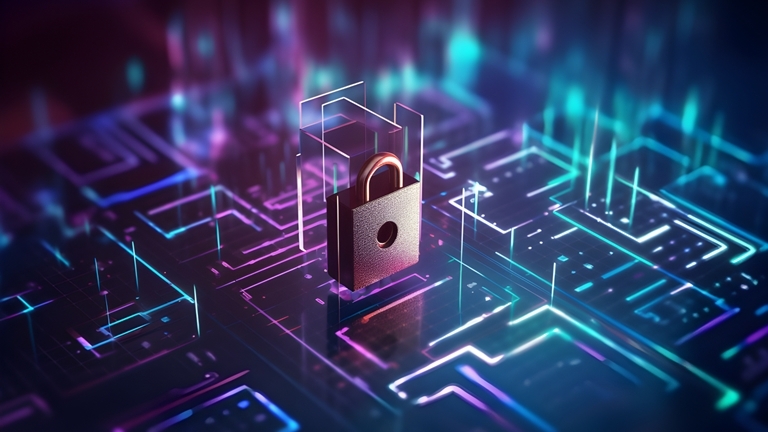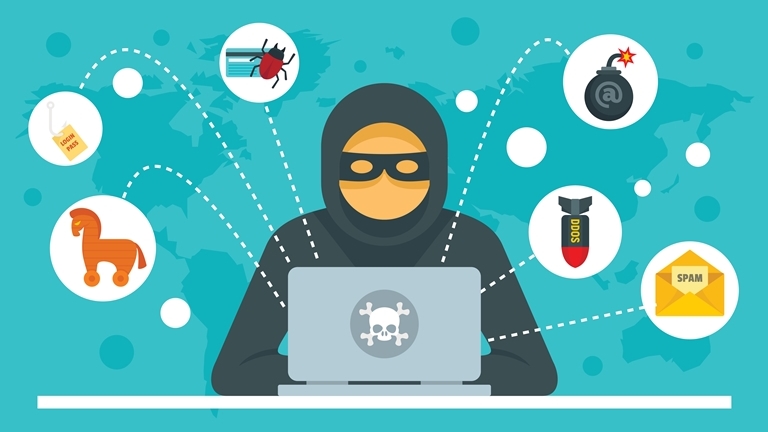What is Cyber Security? Definition, Threats, Best Practices & Why It Matters
Cybersecurity involves protecting your devices, data, servers, and networks from digital threats. Learn why it's crucial to protect yourself from these threats!
Cyber security is one of the biggest buzzwords in this digital age, and it’s encouraging that more people are starting to understand the importance of safeguarding themselves online. In fact, 62% of people in the Asia-Pacific region feel that they could potentially become a victim of cybercrime1, to say nothing of the billions of dollars’ worth of economic damage that these already cause each year.
Naturally, since nobody wants to end up a victim of a potential phishing or malware attack, it’s important that we know how these threats operate and protect ourselves.
We’ve done up a rundown of facts, best practices, and other useful information in this article, so take it right from the top with us, or hop straight to one of the other sections below by clicking on them.
🖥️ What is Cyber Security?
Cybersecurity is the practice of protecting your devices, data, and networks from digital threats such as hackers, malware, and data breaches. It’s about making sure your personal, financial, and sensitive information stays safe when you’re online. This practice covers everything from securing your home Wi-Fi network to preventing cyberattacks on large companies or government organizations.
⚙️ How Cyber Security Works?
Cyber security operates across multiple layers:
- Network security – Protects internal networks from unauthorized access (e.g., firewalls, VPNs).
- Application security – Ensures software is free of vulnerabilities that hackers can exploit.
- Data security – Encrypts and protects stored and transmitted data.
- Endpoint security – Secures individual devices like smartphones and laptops.
- User awareness – Educates people on recognizing and avoiding cyber threats.
By understanding these layers, you can strengthen your own defenses against cyberattacks.
🤔 Why is Cyber Security Important?
Every day, we share sensitive information online - from banking details to social media accounts. Without cybersecurity, this data is vulnerable to cybercriminals.
Cybercrime is a growing global concern. In Singapore alone, cybercrimes increased by 49.6% in 2023, with phishing and scams being the most common threats. Cybercriminals use sophisticated techniques, including artificial intelligence, to launch attacks, making it crucial for users to stay vigilant.
By taking cybersecurity seriously, you protect yourself from financial losses, identity theft, and privacy breaches.
⚠️ Types of Cyber Security Threats
Cyber threats are evolving constantly, but some are especially dangerous. Here's a closer look at the most common threats:
1️⃣ Phishing Scams
🔹What it is?
Phishing is when cybercriminals disguise themselves as trustworthy entities to steal your personal information, like login credentials or financial data.
🔹Real-World Example:
In 2023, a Singaporean man fell victim to a phishing scam that led to a massive financial loss. The victim received an email claiming to be from the Consumers Association of Singapore (CASE), stating that he was eligible for a refund related to a complaint he had filed.
Believing the email to be legitimate, the victim clicked on a live chat icon within the email, which led him to a fake DBS banking portal. He was prompted to enter his banking details, unknowingly giving scammers access to his account. As a result, over S$149,000 was siphoned from his account.
This attack highlights just how realistic phishing scams can be and how easily they can lead to significant financial loss if not properly recognized.
🔹How to Protect Yourself from Phishing:
- Check the sender’s email address for minor discrepancies.
- Be cautious of urgent requests.
- Don’t click on suspicious links—hover over them to check the URL.
- Use multi-factor authentication (MFA) for an extra layer of security.
2️⃣ Computer Viruses
🔹What it is?
A computer virus is malicious software that attaches itself to legitimate programs or files. When the infected program is opened, it spreads, corrupting files or stealing data.
🔹Real-World Example:
One of the most infamous computer viruses was the Melissa virus in 1999. This email-based malware originated in the United States and disguised itself as an important Word document. When opened, it accessed the user's email contacts and sent itself to the first 50 addresses in their address book. The virus spread rapidly, causing significant disruption in industries around the world. As reported by The Washington Post, the virus affected companies as far away as Japan and China, leading to widespread chaos.
🔹How to Protect Yourself from Viruses:
- Install antivirus software and keep it updated.
- Avoid opening attachments or links from unknown sources.
- Regularly update your software to patch security vulnerabilities.
3️⃣ Trojans
🔹What it is?
A trojan disguises itself as a legitimate program to trick users into downloading and installing it. Once activated, it performs various malicious activities such as stealing data, installing additional malware, or granting hackers unauthorized access to the system.
🔹Real-World Example:
The Zeus Trojan, discovered in 2007, is one of the most notorious examples. It spread primarily through phishing emails, often disguised as official communications from banks or other legitimate entities. Once installed on a Windows computer, the Trojan stole banking credentials and transmitted them to hackers. As detailed by cyber security provider F-Secure, the Zeus Trojan had a wide range of malicious capabilities, including the installation of additional malware and the remote control of infected systems.
🔹How to Protect Yourself from Trojans:
- Only download software from trusted sources.
- Be wary of email attachments or links in unsolicited emails.
- Keep your antivirus software and operating systems updated.
4️⃣ Ransomware
🔹What it is?
Ransomware is a particularly destructive type of malware that encrypts a victim's files or locks them out of their system, demanding payment (usually in cryptocurrency) for the files to be returned. However, paying the ransom does not guarantee that the files will be released.
🔹Real-World Example:
In 2017, the WannaCry ransomware attack wreaked havoc on a global scale. The ransomware exploited a vulnerability in Microsoft Windows, spreading to hundreds of thousands of computers across over 150 countries, including Singapore, as noted in The Straits Times. Victims were locked out of their systems or had their files encrypted, with a ransom demand for Bitcoin. Despite being eventually shut down, WannaCry caused widespread disruption, affecting businesses, government agencies, and even hospitals.
🔹How to Protect Yourself from Ransomware:
- Regularly back up your important files.
- Keep your operating system and software up to date.
- Avoid opening suspicious email attachments or clicking on untrusted links.
5️⃣ Data Breaches
🔹What It Is?
A data breach occurs when unauthorized individuals gain access to sensitive information. Cybercriminals use a variety of tactics—including hacking, phishing, malware, or exploiting weaknesses in cybersecurity systems - to steal valuable data such as financial records, trade secrets, personal details, and even intellectual property.
🔹Real-World Example:
In September 2022, a data breach at Starbucks Singapore exposed the personal details of over 300,000 customers. According to Channel NewsAsia, the breach occurred due to a set of administrative credentials being shared on a Google Sheet. These credentials were later exploited by a third party, who used them to gain access to customer data, which was subsequently sold on the black market.
As a result of the breach, Ascentis, the e-commerce developer responsible for Starbucks Singapore's platform, was fined S$10,000 for their security lapses in protecting sensitive data.
This breach serves as a stark reminder of the importance of securing access credentials and ensuring that sensitive information is properly protected against unauthorized access.
🔹How to Protect Yourself from Data Breaches:
- Use strong, unique passwords.
- Enable multi-factor authentication (MFA) on your accounts.
- Be cautious about sharing personal details online.
- Regularly monitor your accounts for suspicious activity.
🛠️ Cyber Security Best Practices
Protecting yourself from cyber threats doesn’t have to be complicated. Here are some practical steps you can take today:
1. Use Strong, Unique Passwords
- Create long passwords with a mix of letters, numbers, and symbols.
- Never reuse passwords across different accounts.
- Use a password manager to store and generate secure passwords.
2. Enable Two-Factor Authentication (2FA)
- Adds an extra layer of security by requiring a second verification step (e.g., SMS code, authentication app).
- Most banking, email, and social media services offer this feature—enable it wherever possible.
3. Watch Out for Phishing Attempts
- Don’t click on suspicious links in emails, texts, or social media messages.
- Always verify the sender before providing personal or financial information.
- Check for typos, grammatical errors, or slight variations in domain names (e.g., "faceb00k.com" instead of "facebook.com").
4. Keep Your Software & Devices Updated
- Install updates for your operating system, apps, and security software regularly.
- Many cyber attacks exploit outdated software with known vulnerabilities.
5. Avoid Using Public Wi-Fi Without a VPN
- Public Wi-Fi networks are prime targets for hackers who can intercept your data.
- Use a Virtual Private Network (VPN) to encrypt your internet traffic and protect your privacy.
6. Be Cautious with Downloads & Attachments
- Only download software from trusted sources (e.g., official websites, app stores).
- Avoid opening attachments or clicking links in unexpected emails.
7. Back Up Your Data Regularly
- Store important files in secure cloud storage or an external hard drive.
- In case of ransomware attacks, having a backup means you won’t lose everything.
8. Educate Yourself & Others
- Stay informed about the latest cyber threats and scams.
- Teach family members (especially kids and elderly relatives) about online safety.
📖 Additional Help & Resources
Since we’re on the topic, there are lots of helpful and reputable cyber security resources available to us here on the little red dot. Whether you need reports on the latest cybercrime trends in Singapore, additional tips on staying safe online, or if you just want to learn more about modern cyber threats, feel free to check these out.
1. Cyber Security Agency of Singapore (CSA)
The CSA is the primary agency responsible for strengthening Singapore's cyber security posture. In addition to organising cyber security forums and initiatives, the agency also offers a wealth of information on national cyber security strategies for both individuals and businesses alike.
👉 Learn More: Cyber Security Agency of Singapore
2. Infocomm Media Development Authority (IMDA)
The IMDA plays a crucial role in driving Singapore's digital transformation, providing detailed regulatory and licensing information alongside vulnerability reporting protocols for cyber security. Their reports also offer valuable insights into Singapore’s previous brushes with ransomware and other types of cyber-attacks.
👉 Learn More: Infocomm Media Development Authority
3. Singapore Police Force (SPF)
The Media Room on the SPF website offers general information on the latest cybercrime trends, safety tips, and public guidelines on reporting cyber incidents.
👉 Learn More: Singapore Police Force
4. ScamShield
The newest addition to this list of cybercrime-busting databases, ScamShield is a joint effort by the SPF, the Ministry of Home Affairs, Open Government Products, and the National Crime Prevention Council to better educate the public on the threat presented by modern scams.
On top of providing a spread of scam-related statistics, it also offers an impressive archive of resources and data centred on them. Notably, much of the SPF's previous information and bulletins on the topic, including the aforementioned Scams and Cybercrime Brief seem to have been rehomed here.
👉 Learn More: ScamShield
This article was originally published on 24 April 2023 and last updated on 14 Feb 2025.
1: Source: F-Secure Consumer Research Survey, APAC, July, 2022


 Back
Back



